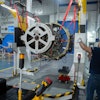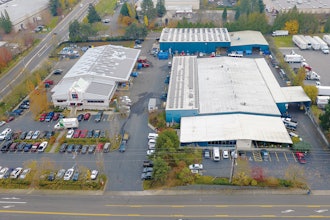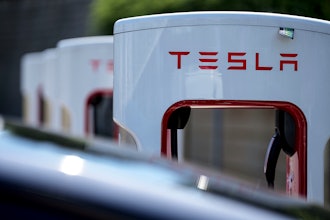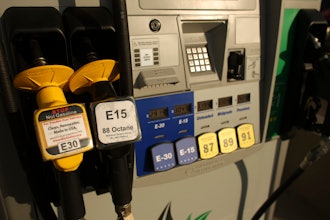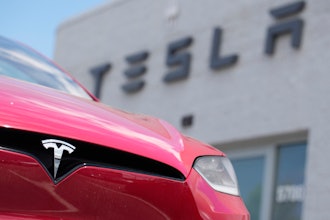Cost, safety and efficiency — these are the three key factors to keep in mind when commencing with your next lighting upgrade project. Antiquated lighting technologies traditionally would only allow for one or two of these demands to be met, leaving industrial facility operators to deal with expensive and time-consuming maintenance or limited quality conditions within the workplace. New advancements in lighting technologies, particularly in the rapidly growing LED market, are making it more economical and easier than ever to introduce energy efficient solutions into facilities with minimal disruption but a positive, maximized impact to your next energy bill.
Industrial facilities, due to their large size and high-quality lighting demand for safety and productivity purposes, consume a significant amount of energy in order to keep the facility well-lit for plant operations. The introduction of LED lighting offers one of the easiest and most efficient solutions to cost and energy savings for plant managers.
Currently, LED lighting consists of only 8 percent of all installed lighting with the U.S. industrial and manufacturing sector, with continued adoption expected to rise in the years to come. As LED solutions continue to revolutionize the lighting market, offering superior efficiency, light output, longevity, color quality and versatility compared to conventional lighting solutions including metal halide, florescent, incandescent and halogen, its market share is expected to experience significant growth, expanding to 65 percent by 2025. LEDs are here to stay and their benefits are now being recognized more widely throughout the industry however, there are three key factors to consider when selecting a lighting technology, LED or not.
Tip No. 1: Check Where Lighting Technologies Can Be More Efficient
If your building was built 15-plus years ago and hasn’t experienced significant construction or upgrades, it’s likely your lighting solutions consist of fluorescent, metal halide or incandescent technologies. In the past, these were the standard and provided the desired illumination however, similar to the replacement of brick phones with touch-screen iPhones, the previous lighting technology has now been rendered obsolete by automation advancements.
When evaluating your LED options, it’s important to compare your energy usage as this will help to best determine your overall savings. When compared to traditional fluorescent lighting technologies, LED lighting solutions are approximately 40 to 60 percent more efficient. Simultaneously, for those looking to replace incandescent with LEDs, efficiency can be boosted by up to 80 percent.
These efficiency savings are only baseline measurements — highlighting what a facility can save simply by replacing their technology. Numerous automation capabilities specific to LED technologies can help boost lighting efficiency by an added 10-20 percent. This comes through the integration of different control solutions that can be as simple as occupancy sensors to ensure lighting is turned off when not in use, or as complex as dimming technology that adjusts to natural light, ensuring consistency in lighting levels throughout the day. The use of automation controls to increase energy efficiency gives facility managers the opportunity to save on their energy costs and boost sustainability efforts in reducing wasteful energy usage.
Tip No. 2: Skip The Timely And Inconvenient Maintenance With Durable Construction
Most facility managers have accepted the fact that maintenance and operations will be a "sunk cost" and something they’ll deal with no matter what due to average wear and tear on the facility and its technologies. While maintenance will be needed at some point throughout the facility’s lifespan, it doesn’t have to be as frequent as we’re used to with outdated lighting technologies.
One of the primary reasons LEDs have become a viable option is due to the consistency delivered, allowing for longevity in the use of these technologies. One of the greatest misconceptions that leads to increased maintenance and costs is the expectation that lighting technologies will deliver the same high-quality output, also known as ‘lumen maintenance,’ throughout their entire lifespan. Some lighting technologies will deliver the original lumen maintenance longer than others while some may experience a steep drop off in quality within the first quarter of their lifespan.
This inconsistency in lighting quality is most apparent with fluorescents which offer 20,000 hours of life on average. While the light may last for 20,000 hours, the quality generally starts to decrease after only 5,000 hours of used by which point the light has lost approximately 30 percent of its lumen maintenance. While no light will deliver the same level of quality throughout its entire live LEDs are getting much closer to this end goal, providing a life-span of up to 100,000 hours with a ninety-two percent lumen maintenance, meaning only 8 percent of the quality is lost over time and replacements are required at fewer increments.
Another reasons LEDs have become a viable option is due to their durable construction which provides longevity and allows for time and costs originally spent on maintenance to be reallocated elsewhere within the plant. Many LEDs are created from extremely durable plastics which minimize risks associated with breakage. In addition, due to the confidence many companies feel in the construction of their technologies, most technology suppliers will offer a 10-year warranty for their products, giving facility managers the added comfort that their investment will achieve the promised results throughout the decade. Simultaneously, for facilities looking to to increase sustainability for that "green" factor, LED solutions provide a 100 percent recyclable solution that does not contain mercury or require a specialized form of recycling for eco-friendly compliance, like fluorescents.
Tip No. 3: Factor In Employee Health
The majority of our day is generally spent at work or indoors. In fact, it’s estimated that we spend 90% of our time indoors meaning we’re exposed to artificial light far more than we are to natural light. When plant workers spend that much time indoors, its critical to ensure the work conditions, including the lighting, promotes good health, enhanced productivity, alertness, comfort, and well-being. Numerous studies have revealed the importance of natural light and the positive impact it can have on body functions which is why lighting technologies should aim to mimic natural light’s ‘full spectrum output’.
LEDs are unique in their ability to adjust diodes in order to achieve maximum spectrum output, bringing the light output as close to natural lighting as possible. This includes a variety of factors ranging from temperature and color to efficacy. Correlated color temperature (CCT) which measures the light’s color appearance, must balance lighting ranges that feature the best biological impact (6,000K-8,000K) with ranges that display a desirable light color (3,500K – 5,500K). LEDs are designed to fall into this ‘sweet spot’ in between the two. Simultaneously, this balance provided by LEDs includes the proper color rendering index (CRI) which reaches the recommended CRI of 80 or higher, outpacing fluorescent lighting with CRI’s values typically ranging from 52 to 75.
Efficacy, or the measurement of light output vs. energy used should always be considered. When selecting a lighting technology, the higher the efficacy, the greater the efficiency and the light output. Using the traditional scale of lumens-per-watt (lm/W), most LEDs (120-140 lm/W) are five to seven times more efficient than incandescent bulbs, nearly twice as efficient as compact fluorescents, and approximately 30-40 percent more efficient than standard fluorescents.
When selecting your lighting technology, there are numerous factors to take into consideration. Luckily for plant managers, more and more solutions, including LEDs are enabling facilities to maximize savings, achieve sustainability goals and promote the overall well-being of their employees making these options a home run among the necessary maintenance operations.
Ron Young is President of Tri-State LED, a division of Revolution Lighting Technologies.


